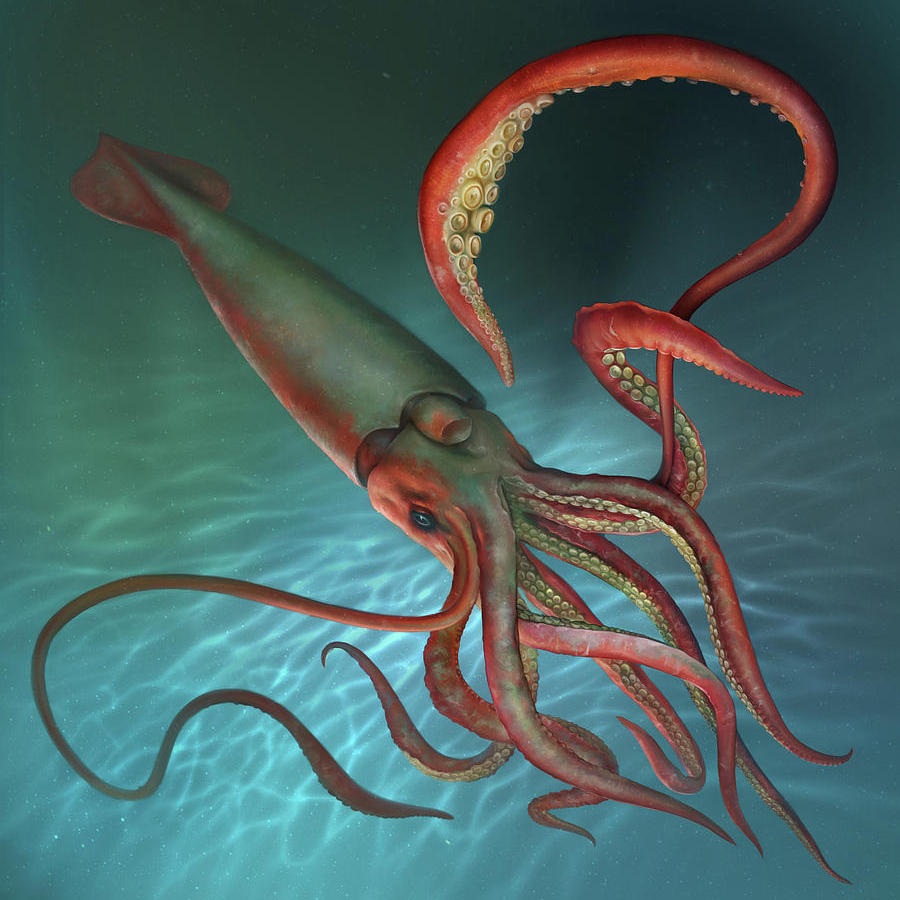

Humans very rarely interact with giant squid, namely because we seldom visit the deep sea. Unlike giant squid, colossal squid are found in polar regions in the Southern Hemisphere. or so at most.Ĭolossal squid have thicker mantles, and shorter tentacles than the giants do. It is believed that colossal squid can weigh up to 1,650 lbs., and giants are estimated to weigh only 600 lbs. Colossal squid are believed to be larger than giants, at least in weight. Giant squid are sometimes confused with colossal squid, but in reality they are not closely related. It is believed that these squid are solitary, because they are only captured in nets individually. Prey is captured by quickly grabbing it with the two long tentacles. It is believed they may occasionally cannibalize each other, as fragments of other giant squid beaks have been found in their stomachs. These squid feed on deep-sea fish and other species of squid. It is rare to find them near tropical or polar regions. In the Pacific Ocean they can be commonly found from Japan to Australia. Their distribution is incredibly widespread, with specimens found or captured from the north Atlantic Ocean near Norway, and Newfoundland to the south Atlantic Ocean near South Africa. These squids can be found in deep oceans worldwide.


Because so little is known about these squids, they may very well frequent other deep-sea habitats as well. They are most frequently found near continental shelf slopes, and islands slopes. The first time a giant squid was ever recorded on video was in 2006, and scientists are still continuing their research.įrom what scientists have surmised, giant squids live in the deep sea, close to slopes in the sea floor. Scientists didn’t even photograph a living specimen until 2004. Recent Research – Our knowledge of this elusive squid’s behavior, lifestyle, and reproduction is still in its infancy.Though scientifically unconfirmed, there have been reports of specimens 60 or 70 feet long. long! What’s even more impressive is the infancy of our research on these animals. Scientists have confirmed specimens as large as 43 ft. Giants of the Deep – Giant squids are truly impressive creatures.This means that when they leave the depths their eyes deflate like water balloons. Because these squid live in the high-pressure environment of the deep sea, their eyes are filled with water instead of the thicker substance ours are filled with. Big Pair of Peepers – A giant squid’s eyes are massive! They can be as large as dinner plates or Frisbees at 10.5 inches across.Sperm whales are commonly scarred with round incisions from these enormous squids’ suckers. Deep beneath the water’s surface, these colossal creatures battle for their lives. Deep Sea Death Battle – Giant squid are the primary prey for, and mortal enemy of, the sperm whale.If their mere existence isn’t shocking enough, these fun facts may catch you by surprise. The idea of a massive squid at the bottom of the sea is interesting in itself. The arms and tentacles are lined on the inner surface with round suction cups containing serrated tooth-like chitin. Most of the squid’s length consists of arms and tentacles, making them surprisingly light for their size.


 0 kommentar(er)
0 kommentar(er)
